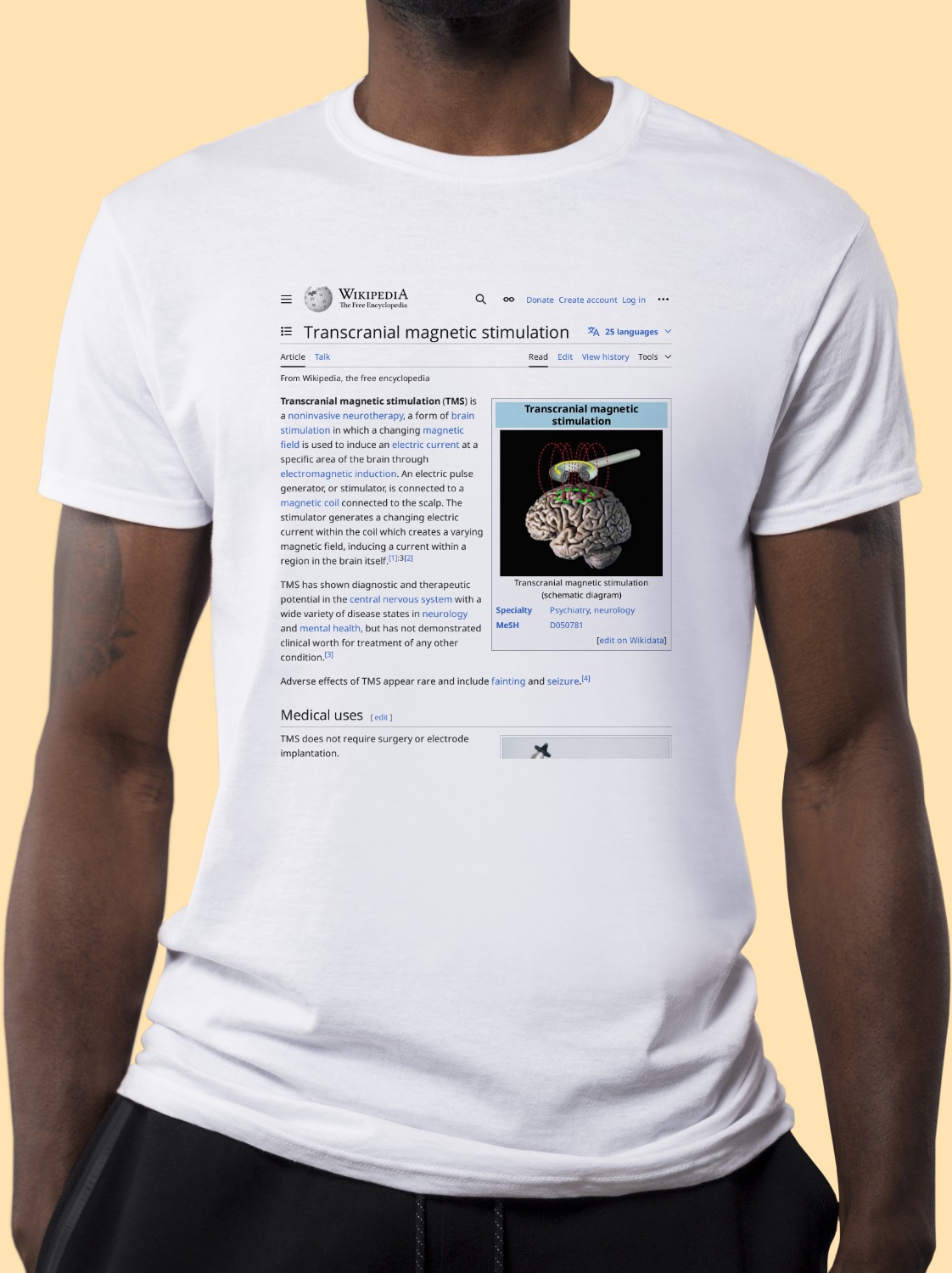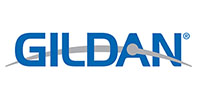
Transcranial magnetic stimulation Shirt
A classic cotton tee emblazoned with the Wikipedia article on Transcranial magnetic stimulation ↗.
cotton tee emblazoned with the Wikipedia article on Transcranial magnetic stimulation ↗.- Preshrunk jersey knit
- Seamless double-needle 2.2 cm collar
- Taped neck and shoulders
- Tear away label
- Double-needle sleeve and bottom hems
- Quarter-turned to eliminate centre crease
Transcranial magnetic stimulation (TMS) is a noninvasive neurostimulation technique in which a changing magnetic field is used to induce an electric current in a targeted area of the brain through electromagnetic induction. A device called a stimulator generates electric pulses that are delivered to a magnetic coil placed against the scalp. The resulting magnetic field penetrates the skull and induces a secondary electric current in the underlying brain tissue, modulating neural activity.
Repetitive transcranial magnetic stimulation (rTMS) is a safe, effective, and FDA-approved treatment for major depressive disorder (approved in 2008), chronic pain (2013), and obsessive-compulsive disorder (2018). It has strong evidence for certain neurological and psychiatric conditions—especially depression (with a large effect size), neuropathic pain, and stroke recovery—and emerging advancements like iTBS and image-guided targeting may improve its efficacy and efficiency.
Adverse effects of TMS appear rare and include fainting and seizure, which occur in roughly 0.1% of patients and are usually attributable to administration error.
About Wikishirt
Wikishirt is a retail experiment that lets you buy a shirt with any Wikipedia Article printed on it. There are over 5 million Wikipedia articles, so we have over 5 million shirts.Check out our homepage for random featured shirts and more!